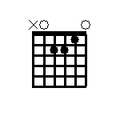Guitar/Rock/Alternative Guitar
Introduction
[edit | edit source]
Rock guitar developed out of the rock 'n' roll guitar style of the 1950s and rock 'n' roll evolved out of the blues and country 'n' western music of an earlier period. In all these genres the guitar has played a central role and the interchange of ideas and style has provided the guitarist with a large volume of work to draw from.
The term rock was first used to describe the bands of the 1960s and 70s. Though the label rock 'n' roll was still in common use. It was during the 1960s that advances in sound technology allowed musicians to explore the sonic spectrum. The Beatles were one of the first bands to take advantage of the new studio technology and effects with their album Sergeant Pepper's Lonely Hearts Club Band. This focus on the studio being an integral component in rock music has led to some producers and sound engineers becoming as well-known as the bands whose careers they shaped.
Many of these sixties bands started their careers playing rock 'n' roll or the blues. The music began to change in this decade; stereo became the standard and bands started to experiment with effects and amps and the blues form gave way to extended jams. The studio evolved new recording techniques and equipment and this led to a higher fidelity for long-playing vinyl records. Driven by the freedom that all these developments allowed, Rock music moved further away from its blues roots and into the realms of psychedelia.
The standard four-piece rock band line-up was a product of the fifties and sixties. It is still many decades later considered to be the ideal. The guitarist as soloist was always a feature of rock 'n' roll with artists such as Chuck Berry (an admirer of the rhythm and blues artist Louis Jordan and notably copied the guitar introduction of Jordan's 1946 hit "Ain't That Just Like A Woman" for his own composition "Johnny B Goode"), Eddie Cochran, Duane Eddy and Buddy Holly cited as early influences on later guitarists. These early rock 'n' roll solos were short and rhythmic. The idea of the virtuoso rock guitarist began with the early psychedelia experiments. Guitarists were experimenting with effects and feedback and were free to play extended pieces. This led to a new approach to the guitar: extended lead guitar solos, delay effects, double-tracking, improvisation, and feedback. Jimi Hendrix, Eric Clapton and Jeff Beck are three guitarists who took the sixties forms they had been playing into the decade of the seventies. All three added or expanded the sounds and techniques for playing rock guitar.
The rock bands that had defined the sixties went on to dominate the seventies. Pink Floyd, The Beatles, The Who, The Rolling Stones are some of those sixties bands. As the seventies progressed, rock music created three important sub-genres: heavy metal, glam rock and progressive rock. All three styles still featured the guitar and if there was any differences between this new music and the earlier rock music, it was one of style not form. As the seventies neared the end of the decade; there was a turn away from the seventies rock sound with the arrival of punk rock. Punk rock guitar style still relied on the rock 'n' roll favorites: barre chords, chordal rhythm and distortion. However punk rock didn't feature long guitar solos and the songs were generally short. This was a return to the short length of the original rock 'n' roll ideals. The roots of punk music can be heard in the first album by The Stooges (released 1969), which didn't sell that well in America and England on first release. However the anarchic life-style and music of The Stooges caught the imagination of the next generation of rockers most notably leading to the Sex Pistols covering "No Fun" on their debut album.
Exercise One
[edit | edit source]-
E
-
G
-
D
-
A
Play with a steady rhythm.

Exercise Two
[edit | edit source]-
C
-
E
-
Am
-
Fmaj7
-
G6
Note the open string of the Fmaj7 and G6 chord.









